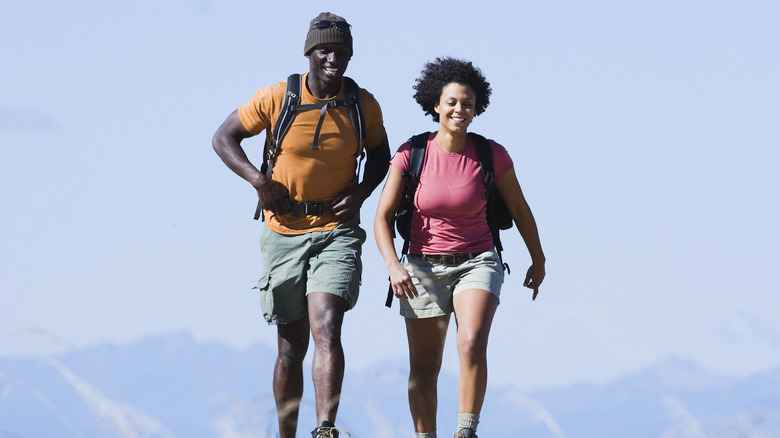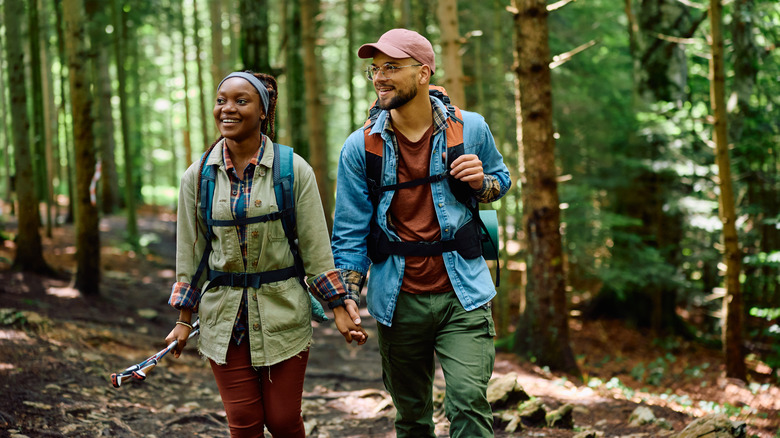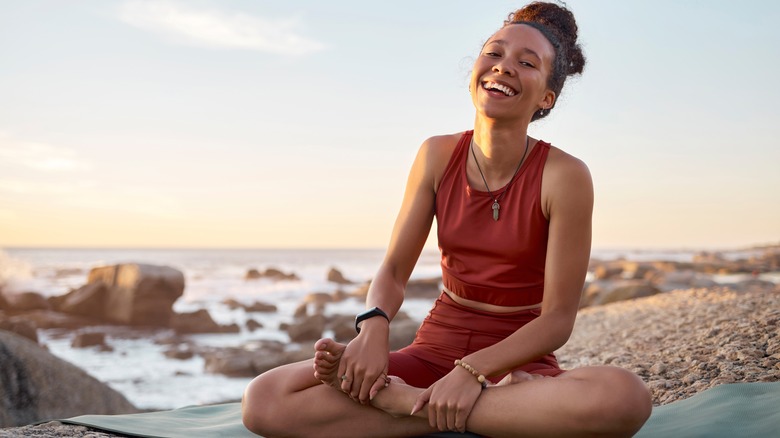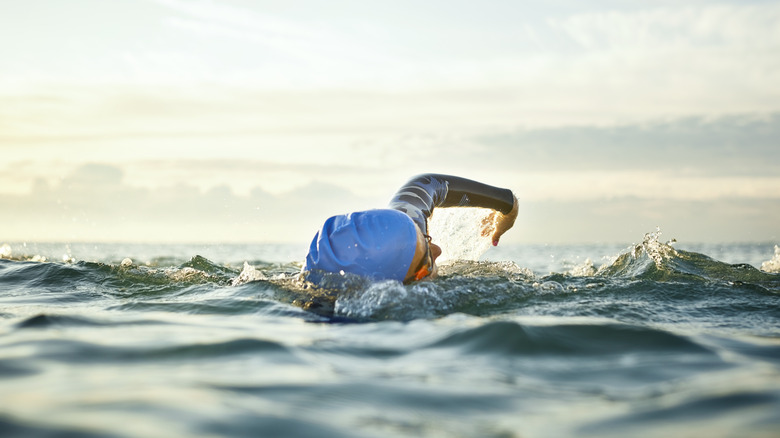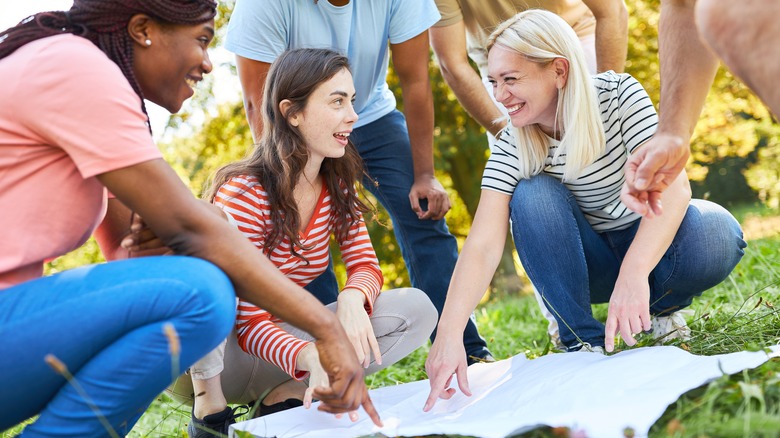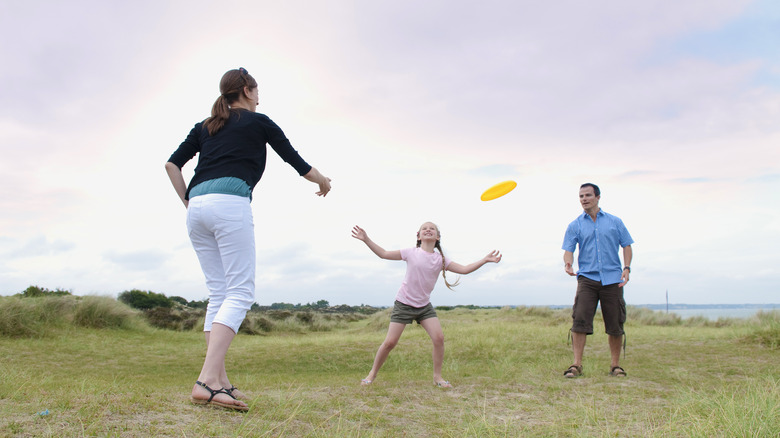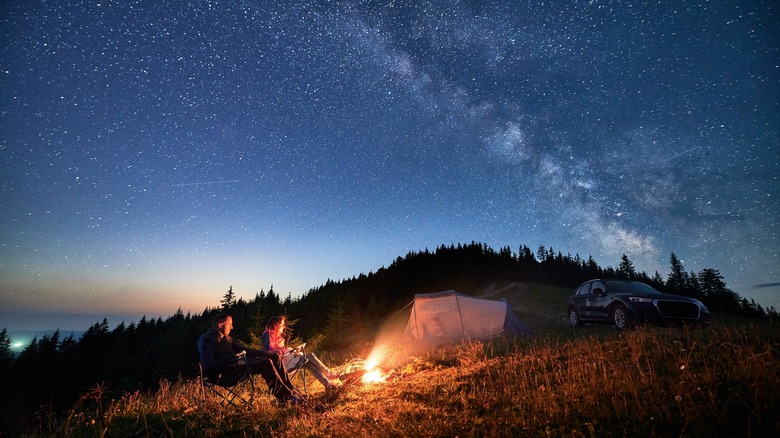Outdoor Sports That Don't Come With A Hefty Price Tag
Outdoor sports not only support physical well-being but also open a portal to the enchanting world Mother Nature has given us. By their very nature, outdoor sports celebrate the expansive beauty of the natural world. Whether it's the rhythmic cadence of running shoes on a forest trail, the gentle whirr of wheels on a cycling path, or the hushed stillness of a dark sky during stargazing, these activities immerse participants in the diverse landscapes nature provides. Unfortunately, many of them come with hefty price tags, which deter potential enthusiasts from making a hobby of them.
However, not all open-air pursuits are costly. The allure of many outdoor activities lies not only in their ability to invigorate the body but also in their accessibility, offering individuals a chance to embark on exhilarating adventures without straining their budgets. Today, we're exploring budget-friendly outdoor activities that don't require you to break the bank, according to outdoor adventurers just like yourself. Whether one is running through nature's corridors, cycling along scenic routes, hunting for hidden treasures, watching feathered friends, or contemplating the cosmic ballet, the great outdoors becomes a canvas for adventure that is within reach for everyone.
Running
Running (or jogging) is often considered one of the most affordable sports, making it accessible to people from all walks of life. All you truly need to start running is a pair of comfortable athletic shoes. While high-end running shoes can be expensive, running enthusiasts at Runner's World proclaim that you don't need to give up an arm and a leg in order to start running. There are many affordable options available that provide adequate support and comfort. They even recommend buying from previous seasons or during sales to reduce costs. In some cases, people may even start with the shoes they already own.
Additionally, unlike gym memberships or fees associated with team sports, running doesn't require a subscription or regular payments. Nor does running depend on specific facilities or venues, which is exactly what Jonathan Fitzgordon from Corewalking loves about it. Whether you live in a bustling city or a rural area, the roads, sidewalks, and trails are open to everyone. This eliminates the need for costly facilities or playing fields. You can simply step outside and start running without any ongoing expenses.
Plus, these days, with the rise of technology, there are numerous free apps and online resources that offer training plans, tracking tools, and guidance. Many running groups and communities organize free runs, too. These resources make it easier for individuals to structure their running routines without the need for a personal coach. This not only provides a sense of community but also offers the opportunity to share experiences, tips, and motivation without the financial burden.
Hiking
Hiking, like running, is considered a highly affordable outdoor activity that provides numerous physical and mental health benefits. The essential equipment for hiking is relatively simple and usually consists of comfortable hiking boots or shoes, weather-appropriate clothing, and a backpack. While high-end gear exists, Madelyne On The Move states there are plenty of budget-friendly options that are just as hardy for those just starting.
Hiking takes advantage of the natural environment as its primary venue. There's no need for specialized facilities, sports fields, or gym memberships. Nature itself provides a diverse and ever-changing landscape for hikers to explore. Local parks, nature reserves, and even public lands often offer hiking opportunities at little to no cost. Another great advantage of taking up hiking is that there is a wealth of free information online, including trail maps, safety tips, and gear guides. Hikers love to blog about their experiences! Educational resources, both online and offline, contribute to hikers' knowledge and help them make informed decisions about their adventures.
While new hikers are often deterred by the costs of a multi-day thru-hike, the truth is that day hikes, which are often free, provide just as much thrill as a longer adventure. Of course, as hikers advance in their skill and seek more difficult terrain, or travel further to explore new lands, costs of gear, supplies, and travel can add up, but after an initial investment, large expenses come up rarely. After all, hiking itself is a practice in minimalism, Lotus Eaters Travel claims, one of the biggest reasons they state it is an inexpensive hobby.
Cycling
The primary investment for cycling is a bicycle. While high-end bikes can be expensive, there are budget-friendly second-hand or refurbished options available for individuals who are just starting, which can be found for $700 or less (via All Bicycle Rider). Bicycles generally have lower maintenance costs compared to some other forms of transportation or sports equipment. Regular maintenance, such as lubricating the chain and keeping the tires inflated, can be done with minimal expense, averaging out to about $100 a year.
Beyond the bike itself, helmets, gloves, and reflective clothing or accessories like bike lights can add to costs. But to mitigate costs, it is recommended to invest in essential safety gear, prioritizing quality helmets and durable locks. Look for sales or discounts when purchasing accessories.
Just like running or hiking, cycling doesn't necessarily involve ongoing membership costs. Once you have a bike, you can explore various routes without the need for subscriptions or regular payments. Cycling can also serve as an alternative mode of transportation, potentially saving money on commuting expenses. Many cities are becoming more bike-friendly, providing designated bike lanes and infrastructure for cyclists.
Yoga
While these days, yoga has earned a reputation for being associated with luxurious Los Angeles lifestyles, it doesn't have to be unbearably expensive to practice. Yoga can still be a cost-effective form of exercise that promotes physical and mental well-being, according to the Aura Wellness Center.
First, yoga is versatile in terms of location. Though it feels like you need to head into a yoga studio, many people practice yoga at home using free online resources or attend affordable community classes. There is an abundance of free online yoga classes and tutorials available on platforms like YouTube and various fitness apps. Whether at home, in a park, or even during travel, individuals can practice yoga virtually anywhere. This goes for retreats, too. Participating in yoga retreats or special events can be a significant expense. Instead of spending hundreds or even thousands of dollars on a retreat halfway across the globe, consider local workshops or events that are more budget-friendly. Create a home retreat by dedicating time to your practice without incurring travel or accommodation expenses. If becoming a certified yoga instructor is a goal, research affordable training options or consider scholarship opportunities. Some studios offer work-exchange programs where you assist in exchange for training.
Another cash grab tends to be "yoga clothing." But, truth be told, there is no uniform requirement for yoga. In fact, the original yogis and sages practiced yoga in saris or robes! Wear comfortable athletic wear you already own that is comfortable and lets you move freely.
Swimming
Swimming is a popular and beneficial form of exercise that offers numerous advantages and can be quite cost-effective, as detailed by Wandering Swimmer. Many communities have public pools or recreation centers that offer affordable admission fees for swimming. For a few dollars, individuals can access swimming opportunities without the need for expensive memberships. Swimmers also require minimal equipment, such as a swimsuit and goggles, which are generally an affordable upfront investment. While additional gear like swim caps or fins may be beneficial, they are not essential for casual swimmers.
For those who live near natural bodies of water like lakes or rivers, open-water swimming is a cost-effective alternative. While safety precautions must be considered, swimming in natural environments eliminates the need for pool fees.
If you don't know how to swim, many communities offer affordable swim lessons or community swim programs, particularly for children. These programs not only provide instruction but also enhance water safety awareness, making them a valuable investment in a person's overall well-being. Learning to swim is a life skill that can be enjoyed throughout one's lifetime. Once individuals acquire swimming proficiency, they can continue to swim independently without the need for ongoing lessons or coaching.
Geocaching
Geocaching stands out as one of the most affordable sports, combining outdoor exploration, technology, and community engagement without requiring a substantial financial investment. In fact, on a Geocaching forum, user GeoPirates20007 explains that it is one of the cheapest hobbies out there — geocaching itself is free to participate in. The concept revolves around the joy of discovery and sharing locations with others. There are no fees associated with finding or hiding geocaches, contributing to their affordability. The primary equipment needed for geocaching is a GPS-enabled device, such as a smartphone or a dedicated GPS receiver. Many people already own smartphones, and there are numerous free or low-cost geocaching apps available. This makes the initial investment minimal, especially compared to sports that demand specialized gear or equipment.
Geocaches come in various shapes and sizes, from small containers to creative DIY setups. Participants often create their own containers or repurpose everyday items, emphasizing the hobby's creative and cost-effective nature. The DIY aspect adds a personal touch to the activity without requiring additional expenses. Due to the number of hobbyists, geocaches are hidden in diverse locations, ranging from urban areas to natural settings. This variability allows participants to choose geocaches that suit their preferences and abilities, making them accessible to people of all fitness levels. There's no need for expensive facilities or travel to specific venues.
Geocaching has a strong and supportive online community. Participants share their experiences, hints, and tips on various platforms, fostering a sense of camaraderie. This community-driven support enhances the geocaching experience without the need for additional financial commitments.
Frisbee
Ultimate Frisbee is widely recognized for its affordability and accessibility, making it a popular recreational activity. The primary piece of equipment needed for Ultimate Frisbee is a flying disc or a Frisbee. Frisbees are relatively inexpensive and widely available, according to Quora user Greg Kemnitz, making the sport accessible to people of all economic backgrounds. Disc golf, a variation of frisbee, may involve purchasing specialized discs, but these can also be purchased second-hand.
Unlike many team sports that require specific and often costly gear such as helmets, pads, or uniforms, Ultimate Frisbee doesn't have these requirements. Comfortable athletic wear and suitable footwear are typically all that's needed, reducing the overall cost for participants.
Ultimate Frisbee has a relatively informal and laid-back culture. Frisbee can be played in a variety of open spaces such as parks, fields, or beaches. These spaces are usually free to access, eliminating the need for expensive facilities or memberships. Casual games can be organized spontaneously, making it easy for individuals or groups to play without advance planning. Many games are played in a pickup format, where individuals can join without being part of a formal team or league. Organizing a game of Ultimate Frisbee is relatively straightforward and typically involves minimal costs. With just a Frisbee and a suitable playing field, individuals can start a game without the need for complex equipment or facilities.
Birdwatching
Birdwatching, or birding, is a recreational activity that involves observing and identifying birds in their natural habitats. All that's needed is a pair of binoculars and a field guide, both of which can be purchased at various price points to accommodate different budgets (via All About Birds). In some cases, individuals may even start bird watching without binoculars, using the naked eye to observe birds. Birdwatchers can enjoy their hobby in a variety of natural settings, such as parks, forests, wetlands, and even urban areas. Many of these locations are free or have low entrance fees, providing affordable access to diverse bird habitats.
Birdwatching is a self-guided and casual activity. There's no need for structured lessons or organized events, allowing individuals to explore at their own pace. This informal approach eliminates the need for professional guidance or instruction. The DIY aspect of birdwatching contributes to its affordability, as enthusiasts can learn about birds without the need for formal classes or workshops.
Traveling to different birdwatching locations may involve transportation and accommodation costs. But traveling with a buddy or a group can mitigate these expenses. Plus, finding a buddy shouldn't be too hard since birdwatching is an inclusive activity suitable for individuals of all ages. Families, young children, and seniors can all participate, fostering a shared appreciation for nature without financial barriers.
Stargazing
Stargazing is a mesmerizing and contemplative activity that involves observing celestial objects in the night sky. It's a hobby appreciated for its simplicity and accessibility, and, according to Telescopes Plus, it can be low-cost.
The night sky is freely accessible to everyone, regardless of location. Stargazers can enjoy the beauty of the cosmos from their backyard, a local park, or a rural area. While urban areas may have light pollution, making it more challenging to see celestial objects, stargazers can find dark sky locations in rural areas or designated dark sky parks. These locations often have minimal or no fees, providing affordable access to pristine night skies.
Additionally, stargazing can be enjoyed with minimal equipment. Quality telescopes can range from affordable to high-end, but you can always start with a beginner-friendly telescope and consider buying used or refurbished models. Join astronomy forums or clubs where members may offer guidance on telescope purchases. Explore borrowing or renting telescopes for occasional use. Alternatively, while a telescope can enhance the experience, it's not a necessity. Beginners can start with just their eyes or a pair of binoculars, both of which are relatively low-cost compared to some hobbies that require specialized gear. Star charts, planispheres, or astronomy apps may be used for celestial navigation, but many astronomy organizations provide free versions of these as well, so you can ponder the beauty of our galaxy at virtually no cost.
